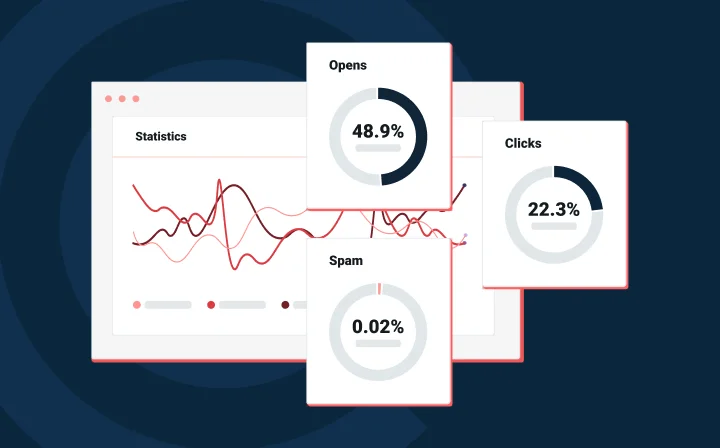Deliverability
Email validation – Why is it vital for your deliverability?

Deliverability

We all have those moments when we get nervous and need to double-check ourselves. Did we fill in the right answer bubbles on a test? Did we type in the right password when creating our new bank account?
Email is no different. Without validation, email lists can get unruly, filled with invalid addresses, incorrect domains, and disengaged recipients. Validation tools help take the anxiety out of sending by making sure your lists are filled with the accurate addresses of people who want to hear what you have to say.
Email validation: Ensuring your list is clean and reliable
Email validation isn’t just about catching typos or misspelled addresses—it’s about ensuring that an email address is active, valid, and ready to receive your messages. When most people think of email validation, they picture tools that correct simple mistakes. But there’s much more to it:
Keeping your email list healthy requires more than just removing obvious errors. With the growing issues of email spoofing and spam traps, maintaining list hygiene is critical. By validating these key factors, you can ensure your mailing list remains accurate, up-to-date, and effective in reaching your audience.
Email validation is how you maintain a clean and functional mailing list. It involves checking the syntax of each submitted email address to ensure it follows the correct format for a valid email address. This process helps weed out bad emails that might be entered incorrectly. Email verification services confirm the existence and validity of an email address through various checks, including domain verification and SMTP verification. List validation, powered by these services, ensures that only genuine subscribers with valid email addresses are added to a mailing list, enhancing deliverability and engagement rates while reducing the risk of bouncing emails.
Before we dive into the three key ways a validation tool can help we’ve got a bit of housekeeping to do. You can’t set up an email subscription system without implementing strategies to minimize the chances of emails landing in the spam folder. Utilizing a catch-all approach in the sign-up form might seem convenient, but it can lead to a flood of irrelevant or mistyped email addresses. A double opt-in process, however, prompts intended recipients to confirm their subscription, reducing the likelihood of spam complaints. Moreover, this method enhances the accuracy of the mailing list by confirming the validity of email addresses at sign-up. Practices like double opt-in put you on the good side of email servers who are more likely to recognize you as a legitimate sender.
This one’s pretty straightforward. Having a clean list, keeping your list “hygienic,” and any other similar term basically means ensuring that the email addresses on your list are deliverable.
What do we mean by a clean list? Well, we want to make sure that the email addresses have MX records. Email service providers (ESPs) don’t know which mail server to deliver if an email address is missing its MX record.
You need a clear address with an attached domain to send an email message. If your addresses are riddled with typos or don’t have MX records with valid domains, you’re wasting time sending messages that’ll either go to the wrong address or literally go nowhere. Remember, hard bounces look like red flags to inbox service providers (ISPs). A high bounce rate may lead ISPs to refuse to deliver future messages from your sending domain.
Remember, if you send emails to recipients who don’t want your messages, you can trigger spam complaints or abuse complaints. This can tank your sender reputation and your email deliverability.
Mailing list segmentation lets you easily target portions of your mailing list to manually or automatically send specific messages to these segments. Email address validation keeps your segments accurate and focused.
By using email validation, all your segments are free from non-engaged users who can negatively impact your email program and its reputation. You come on top with more focused segments in both technical and marketing aspects. Your audience’s preferences and desires are more specific, so you can cater directly to their needs and grow your customer base. From a technical perspective, you have fewer problems with your mailing list and can more easily avoid spam traps, spammers, and other kinks in your email program.
Are you sending emails frequently to your mailing list? That’s pretty awesome—but there’s a catch. The more emails you send from your domain, the more you are scrutinized by ISPs.
ISPs are constantly on the lookout for spam, and high-frequency senders can gather attention for what’s seen as potential spammer behavior. If your list of email addresses is clean, you have nothing to worry about. However, if you’re sending too much email to unresponsive or invalid email addresses, well, that’s pretty much the definition of spam. In a best-case scenario, ISPs might refuse to place your messages in your recipient’s inbox. However, in a worst-case scenario, you might end up on a blocklist.
This is where email validation helps you out. Giving you that coveted clean list helps you prove to ISPs that your emails are legitimate and avoid penalties and bad reputations that stick to spammers and other bad actors. That way, you can continue to communicate frequently and safely with your list and keep your relationships strong.
This one’s easy: Mailgun’s email validation feature has your back. Here’s why you should take a peek at our email checker:
Now that we’ve delved into the advantages of email validation and the tools available, we hope you’ve gained insight into how they can enhance the impact of your email campaigns. Email verification tools like Mailgun Validate play a pivotal role in maintaining a healthy email program. They ensure your list remains clean, aid in segmenting your audience effectively, and shield you from the scrutiny of ISPs. Explore how Mailgun can facilitate your sending needs. Experience our service with a free trial today!